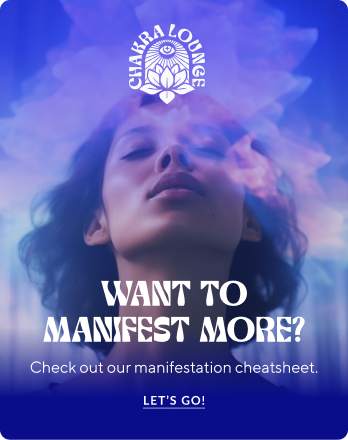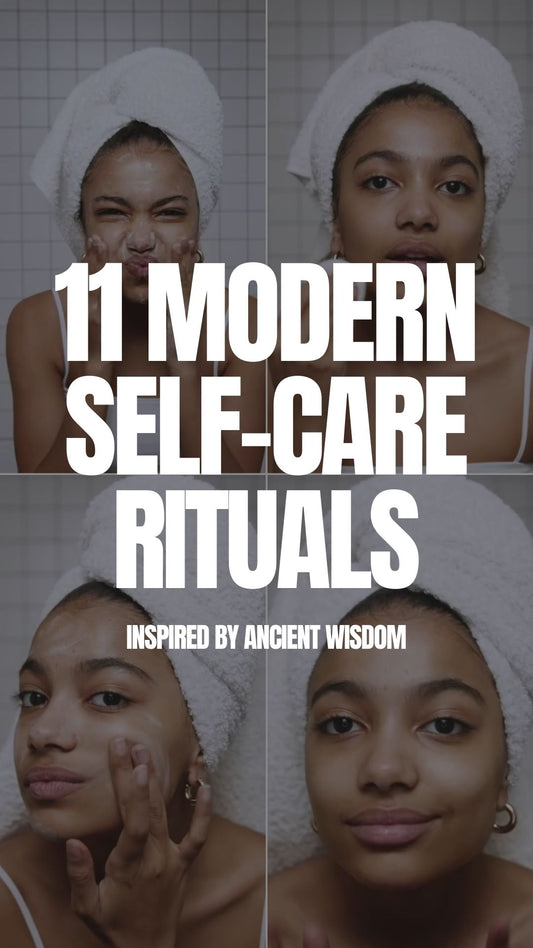The modern life, while offering comfort and convenience, poses challenges and stressors that detach us from our inner selves, the community, and the ageless cycle of nature. This suggests a struggle with factual boredom and prompts the pursuit of self-care. In light of this, many people are looking backward, seeking insights from ancient wisdom to boost their spirits, nourish their souls, and help navigate the intricate maze of contemporary life. Through the harmonious fusion of this traditional wisdom and cutting-edge self-care rituals, a holistic well-being blueprint is accessible.
Wondering how we can incorporate ancient wisdom into our daily routines? The solution is found in applying these ageless ideas to contemporary self-care techniques. Read on as we consider the top practical self-care rituals inspired by ancient wisdom that solve daily life issues, laying out a thorough roadmap for living a rich, well-rounded life.
Definition of Self-care Rituals
Self-care rituals are more than just treating oneself to a major treat or luxurious moment. Neither are they mere habits or routines, but a comprehensive approach that helps you connect to your inner self, body, and nature. It entails making consistent, deliberate decisions and acts that put your general well-being first, enabling us to live happy, balanced lives, regardless of how inconsequential they may seem.
Self-care may sound like a modern idea, but its origins can be traced back to ancient practice, where early societies included self-care techniques in their everyday lives. While it's integral to mental health treatment, we each have a different approach. Try out various self-care techniques below to create your path to serenity and cling to the ones most appealing to you.
Sound Healing
Yoga, meditation, and massage therapy are all great self-care practices, but you might want to experiment with a lesser-known choice in your lifestyle—sound healing. The foundation of sound therapy is the notion that various frequencies and vibrations produced by gongs, Tibetan singing bowls, and tuning forks can calm the mind and body. During a sound healing session, the brain wave shifts from beta (vigilance and focus) to theta and alpha (calmness and introspection) levels. This is the shift that impacts mental, emotional, and physical well-being, fostering a feeling of peace and well-being. Anticipate feeling incredibly at ease and deep well-being from sessions held in a studio with others or on your own with headphones, or relax with the sound of the ocean to see how it works.
Forest Bathing (Shinrin-yoku) Forest bathing—another amazing wellness practice, sometimes referred to as “forest hibernation,” has its roots in “shinrin-yoku,” a type of Japanese therapy developed during the 1980s, and has since evolved into an easy, affordable, healthful, and environmentally responsible remedy for our tech-obsessed and fast-paced world. This meditative practice is about immersing oneself in the forest's (or nature's) ambiance, using your senses of taste, smell, touch, hearing, and sight to establish a connection.
The deep breath and fresh taste of the air, the inhale of the natural aromatherapy of phytoncides and the scent of the forest, the sight of varying shades of green in the trees and the sunshine that filters through their leaves, and the sounds of the forest all reduce your tension and anxiety, promote relaxation, and improve your ability to think clearly. Consider Shinrin-yoku a bridge that closes the gap between you and the natural world by awakening your senses. Americans have access to many beautiful natural places ideal for forest baths, including some state parks in Illinois, where they can practice this self-care activity and reap the mental and physical benefits.
Bathing Rituals
Bathing rituals have a fascinating past, with Turkey (the hammams), Japan (the onsen), and Scandinavia among the countries that have long embraced the practice. Despite its archaic sound, it remains a romantic, fanciful 21st-century self-care and body-grounding activity. The modern world sees it as a means to rejuvenate, reorganize, and release accumulated energy, as well as a gentle force that provides a practical route to the beauty that feels as beautiful as it looks. Even though the Greeks, Romans, Asia, and the Middle East were responsible for the rise in popularity of the practice, you don't have to visit these exotic places before indulging in a bath ritual. You can replicate the experience of a bathhouse at home and reap all of its therapeutic benefits. Start by setting up a soothing atmosphere; enhance the bathing experience by adding exquisite items (Epsom salts and fragrant flowers, essential oils, aromatherapy diffusers, herbs, and spices) to the bath water; light your choice of pillar candles; and enjoy the relaxing scent that will help clear your thoughts as you soak yourself in it. On top of it, pick gentle music from your playlist to create a calm ambiance, and viola, you have a spa-like experience right in the comfort of your own home.
Sun Gazing
Sun-gazing, also known as Surya Yog (Sun Yoga) or Surya tratak sadhana (Sun gazing meditation) in Sanskrit, is the practice of staring at the sun to absorb solar energy to increase the body's power, willpower, and intellect. For centuries, sunlight was believed to be one of nature's greatest gifts, promoting health and happiness, until sunscreens gave it a terrible reputation. Still, the majority of individuals actually require more sunlight, not less.
Aside from the supply of vitamin D, all other essential nutrients, including serotonin, melatonin, and vitamin A, are given to us by the sun. However, gazing aimlessly at the sun will not help; it requires self-awareness and knowledge of the proper technique, which is to roll the eyeballs up so that the energy is absorbed by the sclera, or white parts of the eyes, rather than by staring at it with the retina. Generally, thirty minutes during sunrise or an hour or two after sunrise and before dusk are ideal. These periods are free from UV (ultraviolet) and infrared radiation exposure, which is bad for your eyes. So, rather than dread the sun, sensibly limit your time in the sun and reap the many health advantages of sunshine risk-free— just as nature intended.
Meditation and Mindfulness
If you're searching for ways to get back in touch with yourselves, access the calm, sacred space within, and sense the presence of silence, mindfulness and meditation are two of the most nurturing and rejuvenating practices we can engage in for our mind, body, and spirit. These practices, which originated from various ancient cultures, including Buddhism, Hinduism, and Taoism, have many benefits for modern lifestyles. It provides a cost-free and instant means of feeling and honoring our inner state. Combining mindfulness and meditation techniques, we release old thought patterns, calm our nervous systems, and enter the flow of life, which sometimes leaves us feeling calm and in control. It is a means of gaining access to our inner guiding system so that we can make decisions for our lives that are purposeful, informed, and clear. Nothing is quite as satisfying as finding oneself centered and luminous within, with a clear direction, purpose, and feeling of clarity.
Journaling
Journaling shouldn't stop in school. People from all walks of life can benefit from free-writing their ideas, emotions, and experiences. The paper or digital recording puts you in a private space for imagination and self-discovery that enables you to analyze experiences, formulate objectives, monitor your progress, and gain emotional awareness. For example, you identify the sources of your stress and anxiety as you jot down your responses to things. You begin to spot patterns in reviewing entries, which will help you develop a strategy to prevent escalation, deal with problems more effectively when they arise, and foster growth and constructive change patterns. The beauty of this practice is that it's budget-friendly, you can approach it any way you see fit, and there isn't a proper or incorrect way to journal (whether it's art, reflective, nature, or gratitude journal). You don't have to attempt to write the ideal thing or have flawless handwriting for your descendants or future historians to read.
Digital Detoxification
Only a few people are aware of how our addiction to technology affects our mental health. While these technological advances have provided significant benefits, they have also led to a serious issue—digital overload. It’s on the premise that digital detox surfaced as a remedy to this contemporary predicament, providing people a chance to detach, rejuvenate, and restore balance in their lives. Tech detox, or digital detox, as it’s often called, is a deliberate decision to use less or no digital gadgets and technology like computers, smart devices, and social media. This retreat is crucial, whether it lasts for a few hours each day or several days, to help focus on self-care. It can also take many different shapes and be anything you want, be it giving all digital gadgets away or limiting the use of a single category of digital gadgets.
Ayurvedic Practice
Why is Ayurveda, the ancient healing practice, becoming popular in the modern era? It's a holistic lifestyle proven for treating chronic health problems and has evolved into a contemporary skincare routine (Abhyanga) and oral health products, as well as being used to maintain general wellness daily. Ayurveda is founded on the concept of doshas, which are three bioenergetic factors that influence physiological and psychological activities. These doshas determine a person's makeup, and their imbalance is said to be the underlying cause of illness. Ayurveda strives to restore balance to the body and mind by determining your unique makeup and resolving imbalances through customized meals, herbal treatments, yoga, and meditation. The balance may come differently for people, but generally, it would be a state of contentment, happiness, freedom, vitality, and wholeness.
Chakra Balancing
The energy that powers and sustains our bodily functions flows within us—it's called Chakras. There are seven invisible energy organs, each of which is self-contained and has functions that affect every aspect of our being. When these chakras fall out of balance, certain negative effects happen, which can emerge as insecurity, anxiety, fear, worry, and restlessness. To ensure the body's overall energy system resumes optimal operation, various techniques (meditation, affirmations, energy healing, yoga, nutrition, and essential oils) are utilized to remove excess or stagnant energy from each specific chakra. This process is called chakra balancing. These techniques can be applied to replenish a low chakra or restore an imbalanced chakra, enhancing its capacity to operate as intended. Chakra balancing won't be possible if you can't connect with yourself and identify internal obstructions that will help you free up some time to spend more time with this part of your inner being. Self-care is an ideal approach to accomplishing this.
Yoga
Yoga, a 3,000-year-old tradition, is today recognized in the modern world as a holistic approach to health. It's one of the best self-care methods since the benefits can be physical and mental. Yoga therapy entails teaching yogic practices to prevent or cure structural, physiological, emotional, and spiritual pain, suffering, or limits. One of the primary objectives of this meditation practice is to acquire mental tranquility and promote emotions of well-being, relaxation, enhanced self-confidence, increased efficiency, increased attentiveness, less irritation, and an optimistic attitude toward life. You can benefit from yoga without being an expert, and there are no rules on how often you practice. The more you practice, the more benefits you get.
Sauna and Steam Bath
Steam baths—an energizing, relaxing, and steam-filled chamber—have long been used with the curative benefits of bathing. The Romans made steam baths popular, and their bathhouses inspired many modern-day spas, like Turkey's Hammans, Spanish's AIRE baths, Russian Banya, and the Japanese Onsen. Sweat, on the other hand, has long been a therapeutic application. Nothing is more physically rejuvenating than breaking a good sweat every day. The tension lessens, the muscles relax, and we mentally come out of it refreshed, at ease, and prepared for the day ahead. For millennia, saunas and steam baths have been used for warmth and relaxation and have enthralled societies. Although their function in removing toxins from the body is similar, steam baths differ from saunas. Saunas generate steam by adding water to a hot stove, whereas steam baths rely on the natural evaporation of water at higher temperatures. Steam baths are a genuinely pleasant experience, causing the body to sweat and remove toxins as you relax in the heat. Frequent sauna use strengthens your immune system, enhances cardiovascular health, and regulates blood pressure. Its benefits appear to be closely comparable to those of exercise.
Conclusion
Taking care of yourself is the first step towards self-compassion, self-esteem, and living your best life. But it's not as simple as it seems. You should anticipate a process of trial and error as you start a self-care routine to determine what is most enjoyable and calming for you. After deciding which self-care practices you enjoy the most, try to incorporate them into a regular daily, weekly, and monthly routine. The most crucial thing is to persevere and not give up on self-care on busy days. After all, that is when you are most in need of self-care!






















